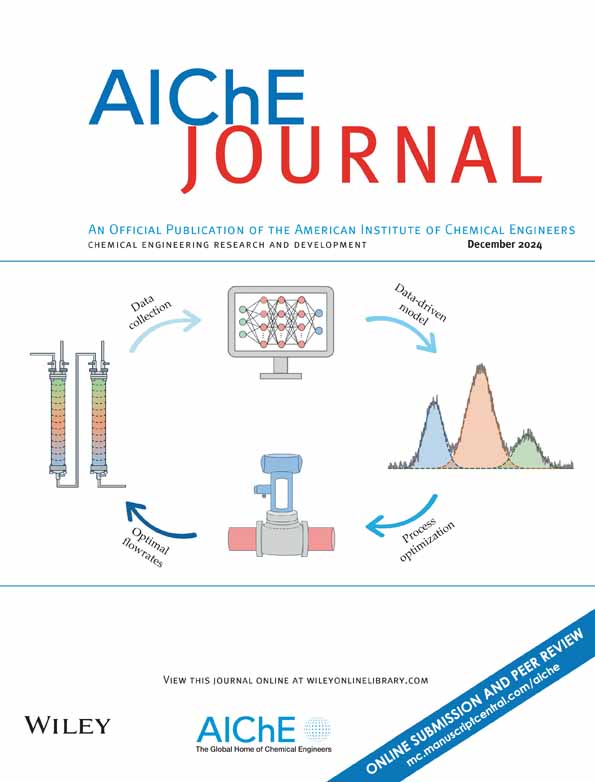CoN4活性位点偶联低负荷铂作为质子交换膜燃料电池的高级氧电催化剂
IF 3.5
3区 工程技术
Q2 ENGINEERING, CHEMICAL
引用次数: 0
摘要
质子交换膜燃料电池(pemfc)因其零排放和高能效被认为是下一代能源转换技术的基石。然而,传统pt基电催化剂的高成本和稀缺性阻碍了其商业化。本文通过将铂位与具有Co-N4活性中心的碳材料相结合,成功地开发了一种低铂负载(0.96 wt%)的铂钴双金属共价有机聚合物(Pt- conc)电催化剂,用于氧还原反应(ORR)。这种独特的结构设计不仅有效地降低了pt基催化剂的高成本,而且显著提高了非贵金属催化剂的活性和稳定性。结果证实,Pt-CoNC在酸性ORR中的半波电位比纯钴酞菁基共价有机聚合物(COP-Co)提高了105 mV。此外,组装后的PEMFC装置在H2-O2气氛下实现了1.14 W cm−2的峰值功率密度,与商业化的20% Pt/C催化剂相当。本文章由计算机程序翻译,如有差异,请以英文原文为准。
CoN4 active sites coupled with low-loading Pt as advanced oxygen electrocatalyst for proton exchange membrane fuel cells
Proton exchange membrane fuel cells (PEMFCs) are regarded as a cornerstone of next-generation energy conversion technologies due to zero emission and high energy efficiency. However, the high cost and scarcity of conventional Pt-based electrocatalysts hinder its commercialization. Herein, we successfully developed a platinum and cobalt bimetallic covalent organic polymer (Pt-CoNC) electrocatalyst with low Pt loading (0.96 wt%) for the oxygen reduction reaction (ORR) by integrating Pt sites with carbon materials featuring Co-N4 active centers. This unique structural design not only effectively mitigates the high cost associated with Pt-based catalysts but also notably boosts the activity and stability of non-precious metal catalysts. The results verified that the half-wave potential of Pt-CoNC in the acidic ORR was increased by 105 mV as compared with pure cobalt phthalocyanine-based covalent organic polymer (COP-Co). Furthermore, the as-assembled PEMFC device achieved a peak power density of 1.14 W cm−2 under an H2-O2 atmosphere, which is comparable to commercialized 20% Pt/C catalysts.
求助全文
通过发布文献求助,成功后即可免费获取论文全文。
去求助
来源期刊

AIChE Journal
工程技术-工程:化工
CiteScore
7.10
自引率
10.80%
发文量
411
审稿时长
3.6 months
期刊介绍:
The AIChE Journal is the premier research monthly in chemical engineering and related fields. This peer-reviewed and broad-based journal reports on the most important and latest technological advances in core areas of chemical engineering as well as in other relevant engineering disciplines. To keep abreast with the progressive outlook of the profession, the Journal has been expanding the scope of its editorial contents to include such fast developing areas as biotechnology, electrochemical engineering, and environmental engineering.
The AIChE Journal is indeed the global communications vehicle for the world-renowned researchers to exchange top-notch research findings with one another. Subscribing to the AIChE Journal is like having immediate access to nine topical journals in the field.
Articles are categorized according to the following topical areas:
Biomolecular Engineering, Bioengineering, Biochemicals, Biofuels, and Food
Inorganic Materials: Synthesis and Processing
Particle Technology and Fluidization
Process Systems Engineering
Reaction Engineering, Kinetics and Catalysis
Separations: Materials, Devices and Processes
Soft Materials: Synthesis, Processing and Products
Thermodynamics and Molecular-Scale Phenomena
Transport Phenomena and Fluid Mechanics.
 求助内容:
求助内容: 应助结果提醒方式:
应助结果提醒方式:


